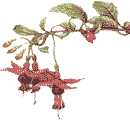Mushrooms and toadstools
belong to the fungi kingdom. There are about 4000 species
of fungi in the UK. Edible fungi with an umbrella shape
and cap and stem are termed mushrooms and poisonous ones
are called toadstools. Most people will be familiar with
mushrooms growing on lawns trees rotting wood on dung and
on old bonfire sites.
Fungi are not plants but
have enzymes to dissolve food externally from where it is
absorbed. Unlike plants mushrooms are not made up of cells
but of thin tubes called hypae many people collect and eat
mushrooms. However beginners must on no account gather wild
fungus to eat unless they have been correctly identified
by an expert.
The problem even for experts
is that edible fungi can have look-alikes which may be poisonous.
Most species can be identified from their characteristics
such as the habitat where they grow, the appearance of the
gills colour, smell and texture. Most species are umbrella
or mushroom shaped and has gills on the cap underside. Here
are three which are edible.

